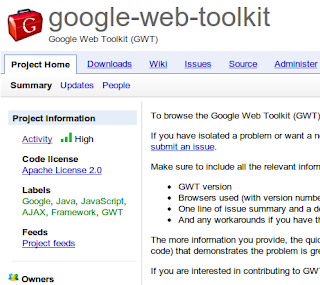When Google acquired Instantiations in August 2010, everyone knew about our Java Eclipse products. Shortly after we joined, we talked about how best to help developers now that we are part of Google. We have always wanted to get these tools in more developers’ hands. So, back in September we decided to give them away for free! The community response has been fantastic. With that done, we asked ourselves, how could we make a good thing even better? How about by open sourcing the code and creating two new Eclipse projects!
Today we are announcing Google’s donation of the source code and IP for two of these products to the open source community through the Eclipse Foundation. This donation includes WindowBuilder, the leading Eclipse Java GUI Designer, and CodePro Profiler, which identifies Java code performance issues. Specifically, the WindowBuilder Engine and designers for SWT and Swing. All in all, this is a value of more than $5 million dollars worth of code and IP.
The Eclipse Foundation’s Executive Director, Mike Milinkovich, states that, “this is clearly a significant new project announcement, and very good news for Java developers using Eclipse. It has been impressive to see the continued growth and popularity of WindowBuilder, as this product has always filled a much needed gap in the Eclipse offerings. We look forward to it appearing in an Eclipse release soon. We’re very pleased with Google’s generous support of Eclipse, and the Java developer community around the world.”
One of the exciting aspects of innovating in the open source arena is that customers benefit from a full community. We are very excited to see the diverse collection of companies and individuals that have already expressed an interest in contributing to these projects. Commercial level support is important to many customers. Genuitec, makers of MyEclipse, intends to offer commercial support for the various WindowBuilder based products including the SWT, Swing Designer and even the GWT Designer from Google. Please sign up on the Genuitec site for more information. Similarly, OnPositive intends to offer commercial support for CodePro Profiler, as well as lead as the committers on the Eclipse Community Project. Sign up on the OnPositive site for more information.
"Genuitec is pleased to offer commercial support for WindowBuilder-based products - Swing, SWT and GWT - in early 2011 for companies who wish to continue a paid support contract once their Google support expires. We've been involved with the Eclipse Foundation since the beginning, so we are very familiar with these products. Thus, providing commercial support for this product line is a natural fit for us," said Maher Masri, President of Genuitec.
“Over the years OnPositive has built up unique experience with the CodePro Profiler and we are excited to offer commercial support for it. Google’s donation ensures that Java developers can build faster applications,” said Pavel Petrochenko, President of OnPositive.
WindowBuilder
WindowBuilder is regarded as the leading GUI builder in the Java community (winning the award for Best Commercial Eclipse Tool in 2009). It includes powerful functionality for creating user interfaces based on the popular Swing, SWT (Standard Widget Toolkit), GWT (Google Web Toolkit), RCP and XWT UI frameworks.
CodePro Profiler
CodePro Profiler is an Eclipse-based Java application profiling tool that helps developers identify performance issues early in the development cycle and find CPU and algorithmic bottlenecks, memory leaks, threading issues, and other concurrency-related problems that can slow down an application or cause it to hang.
Both WindowBuilder and CodePro Profiler will become Eclipse projects in the first half of 2011. Once each one is set up as a project and available for download from the Eclipse site, the products will be accessible to use as open source code under the the standard Eclipse license. I am looking forward to leading the WindowBuilder project.
If you have any questions, you can learn more at this FAQ or we look forward to hearing from you on the forums.
By Eric Clayberg and the Google Developer Tools Team










